
Can’t see it, can’t hit it… Pretty simple but this is the reality of shooting. So take a look at what you want to do and get the scope or sights that will enable you to do that. Some advice from a friend of mine is really important to keep in mind….. “application dictates needs”
Most of the info presented here pertains to long range use of a scope but there are some tidbits that should help you understand what your scope is doing. And remember, with scopes you get what you pay for, ie a cheap scope will not do what an expensive one will. Do your research, talk to everyone but be careful who’s advice you take. Including mine, there are a ton of folks who know way more than I do.
Scope Choice
I think the best way to pick a scope for long range is by the features you want (and need…). Then search to find a scope that has those features but also fits in your budget.
Features cost money so adding them raises your cost. You can get some good features on the cheap but the cost is kept down by taking from somewhere else. I have a really nice but simple Redfield 3×9 scope that has very clear glass, a real bonus. For a hunting rifle it would be just about perfect, but not so much for a long range tactical scope as it’s completely lacking in all other features.
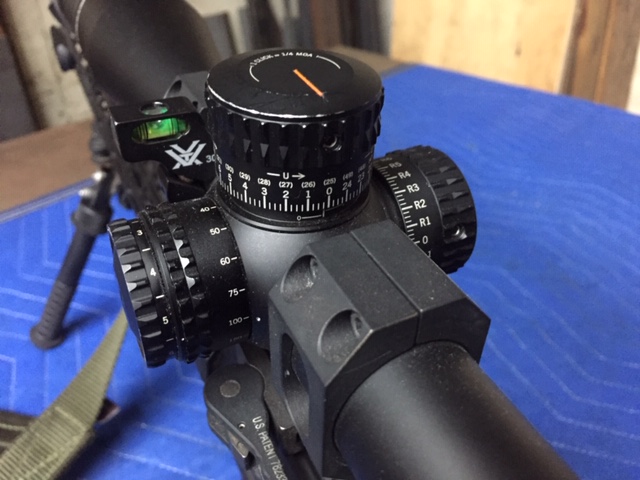
I have the scopes I do because they have the features I wanted, lit reticle, exposed turrets, lots of elevation, zoom range, zero stops etc. but I did pay for those features. The scopes I use are reasonably priced for the features I got compared to the top dollar models. Are they as good as the high end stuff, no, but well within my budget. And I can say with the shooting I have been doing they are perfectly capable of getting the job done.
I got to play with a top dollar scope at one time. Would I like to have one? Absolutely, but there is no way I could justify the cost as a recreational target shooter. Your budget will definitely have an impact on your wants compared to your needs…..
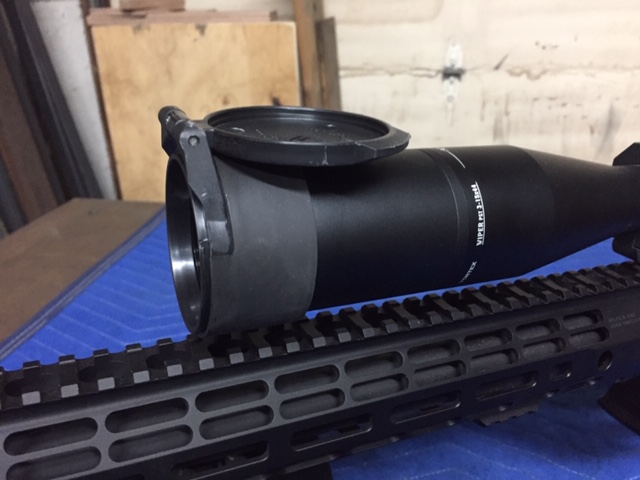
So the best thing to do is be honest with yourself and what you want to do with the scope. The scope that is designed for really long ranges and precision is a bit of overkill for the guy who wants to hunt at 200 yards in the brush. I started off cheap since I didn’t know a lot about scopes. That first scope showed me everything that I wanted in my next scope while teaching me just what it’s like to use optics instead of irons.
Short Range Options
While I tend to think of scopes for long range there are some really good options to use them at short range and at what some folks call cross over distances, going from point blank ranges and extending out. You can see really good with a 10x power magnification and there are starting to be some really good options in this area, 1×10 X or some such range.
This is an area where my buddies comment about “application dictates needs” is even more important than long range. Law Enforcement often works in a changing high speed environment and things change rapidly so keeping things fairly simple just might be a really good idea, no overloading features…..
Long Range
I am just getting into shooting longer distances but there are some things I realized I needed in a scope when I started this game. Number one is large amounts of elevation adjustment! Why? All bullets drop once they leave the barrel. To go long distances they travel in an arc, some in less of an arc than others but there is no such thing as a “flat” shooting bullet. Elevation adjustments in your scope compensate for this arc.
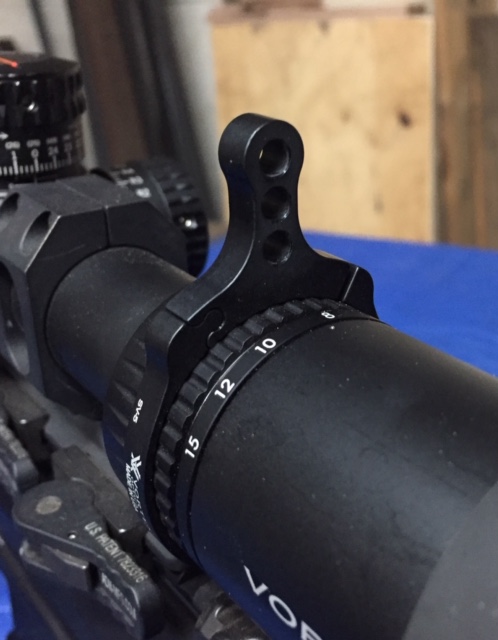
Zoom (magnification) range. Bit of a double edged sword here but necessary. Not enough magnification and you might not be able to see your target. Too much and the scope might be dancing around pretty bad so it’s hard to stay on target (depending on your shooting position…) I tend to only turn up the zoom just enough to get a clear picture, usually no more than about 12 to 14x. You would be surprised how well you can see a target at extreme ranges at this setting.
The reticle is way more important than I ever thought. Simple crosshairs just wont cut it to go long. Not that I don’t like simple hash marks but a well laid out reticle is an indispensible aid to your shooting. Marked reticles allow you to have accurate holdovers and hold offs plus they add range to your scope once your adjustments top out. I am also partial to lit reticles since I live in the Northwest with lots of clouds.
A level. Yes. The level just aids in precision at distance. If your rifle is canted (off level) your shots will be off. Mine is set up so that when I shoot I can still see it in the corner of my sight picture since I shoot with both eyes open… yes even with a scope both eyes should be open. Just a subtle reminder that I am staying level every time I pull the trigger.
MOA vs MIL
Essentially a pointless argument. Just two different graduations used to make adjustments to your scope. Essentially they are systems that break a circle into degrees or angles. An MOA system breaks that into Minutes of Angle while the MIL system uses Milradians.
Click Values
This is where a lot of the confusion between the two set ups comes from. Scope adjustments usually have detents as you spin the dials, ie clicks. Most MOA scopes break down 1 MOA into 4 clicks. Milradian scopes break down each Mil into 10 clicks. This is simply just two different ways that the mechanical adjustments are made within your scope. Think of it as two different languages saying the same thing. Or like fine thread vs coarse threads of a bolt…. Comes down to you speaking the language of your chosen system.
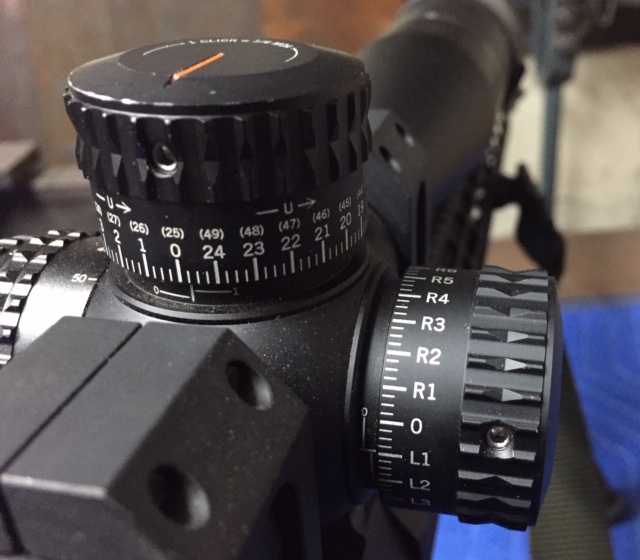
Now for the shocker to most people, just because the Military tends to use MIL based scopes doesn’t mean they are better. If they work for you great. But realize most MOA based systems have finer adjustments per click, most commonly, just over .25 in at 100 yards while MIL clicks are .36 in at 100 yards. Or move things out to 1000 yards and the click of MOA moves the impact by over 2.5 inches and the click of a MIL scope moves it 3.6 inches, a significant difference. Even more dramatic is the comparison between 1 MOA (4 clicks) and 1 MIL (10 clicks) at 1000 yards, 1 MOA is just over 10 inches while one MIL is 36″… This is why it’s important to learn the language your scope is using.
Remember, not all MOA scopes use 1/4 MOA clicks, some use 1/2 which is huge and some target scopes have 1/8 MOA clicks. Not sure but I believe Milradian based systems all the use the same click values
Some of the best advice I ever read, if I remember correctly, was from Brian Litz, the guy behind Applied Ballistics. He said that if you think in Inches go with MOA and if you think in Metric go MIL. Simple but good advice.
Adjustments
Understanding how your scope works is important… It will have windage adjustments for right and left changes and an elevation knob for up and down. And it’s the up and down that is primary for me as I need to make changes in the elevation to account for bullet drop at distance. When I get to shoot really long the windage will become just as important…..
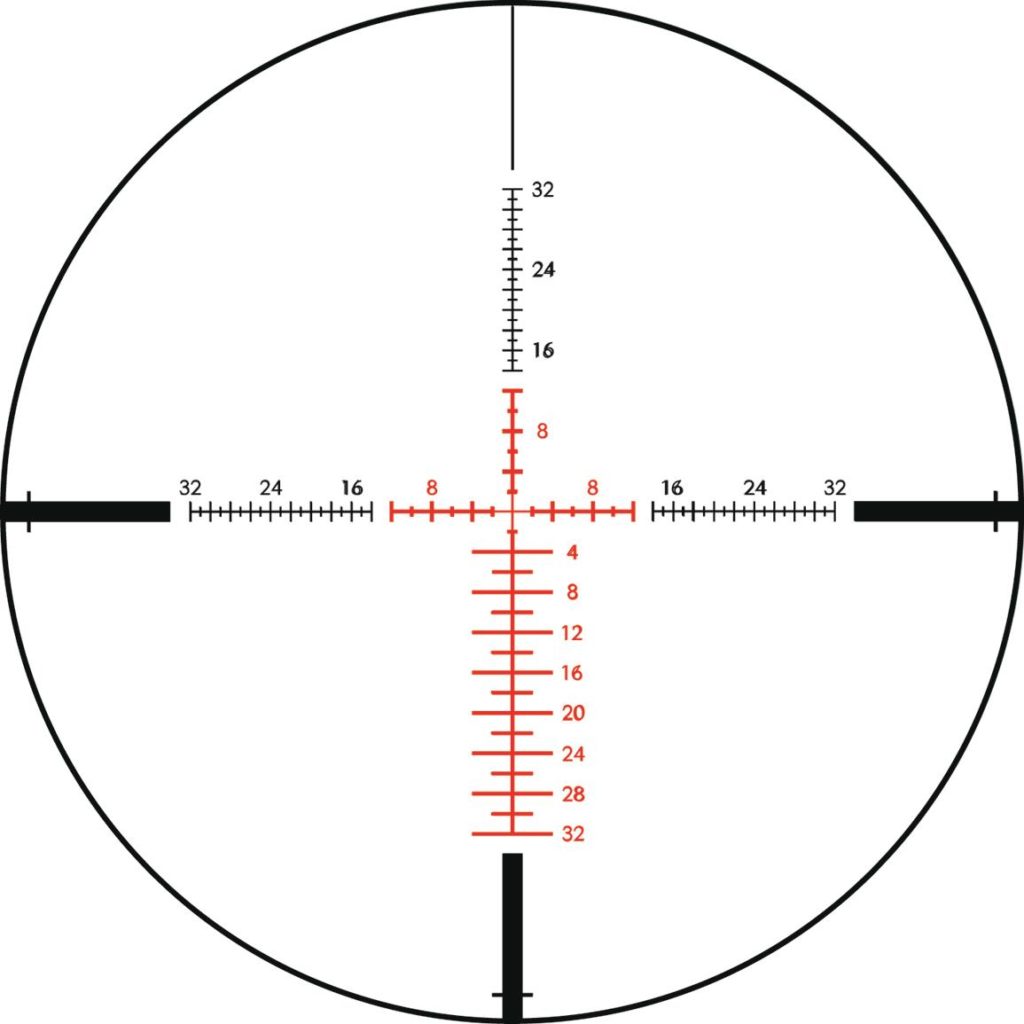
When you turn the knobs on your scope, the exterior of the scope doesn’t move. Its just the mechanism inside. And what gets a bit confusing is that adjustments to your scope seem to be moving in the opposite direction of the markings on the knobs. If you hold your rifle still on a target and crank the elevation knob in the up direction, it appears that the reticle is moving downward. Same is true for the windage knob, adjust right, reticle appears to move left.
So instead of thinking that you are adjusting your scope you are, in reality, moving the point of impact. Directional adjustments to your scope changes the point of impact…. Those changes to the sight picture are forcing you to move the barrel to point in a slightly different direction.
Back Up Sights
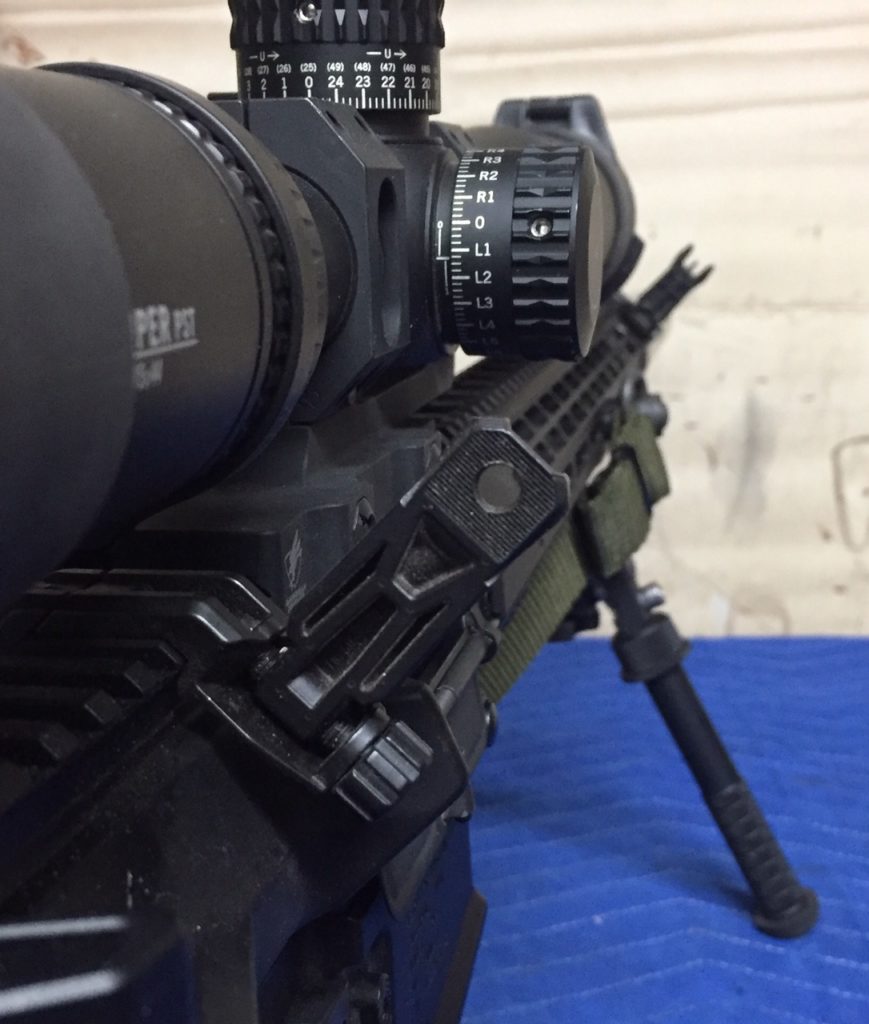
Yes even on my long range rifles I have back up sights. And those back up sights can be used without removing the scope. Don’t know how many times I have seen the fold down iron sights buried under a scope, and that scope needs tools to be removed. Not exactly what I consider a back up system….
A really nice feature with the Magpul MBUS Pro sights I use is there ability to fold down and tuck away when not being used. And since they are on scoped rifles they don’t get used all that much.
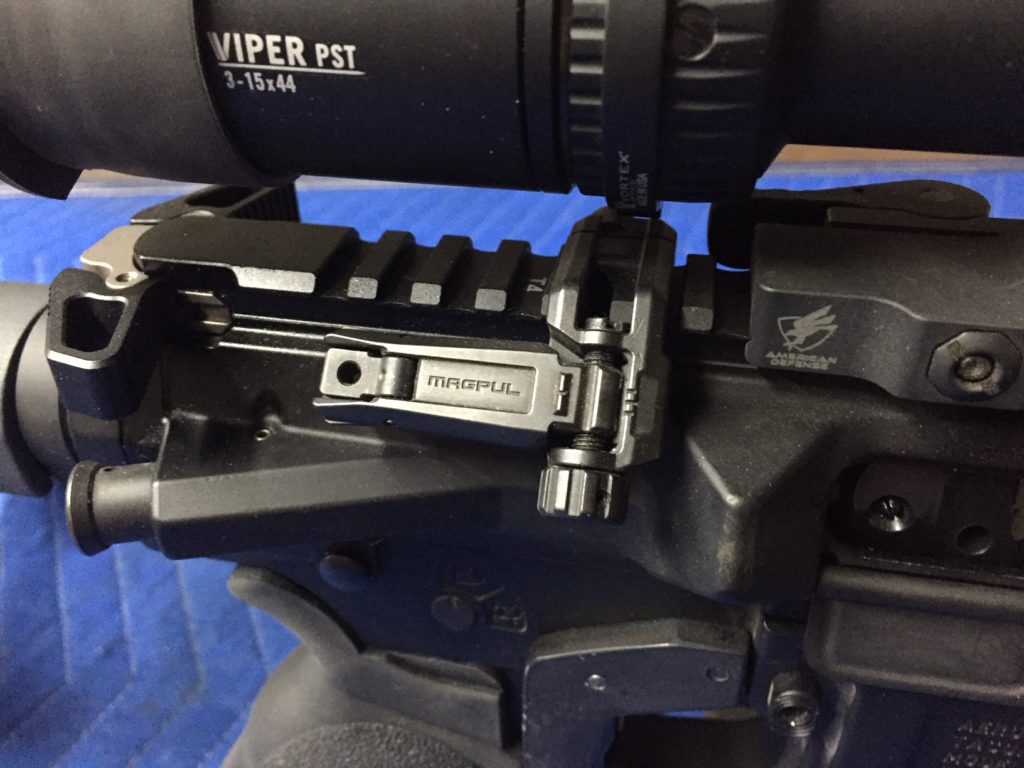
Someone once said that iron sights are the stick shift of the shooting world and I have to agree with them. Before you ever put a scope on your rifle, learn to use irons. It will make you a better shooter….
Red Dots
And don’t shortchange the option of adding a red dot to your scope set up, lots of mount manufacturers build scope mounts that have this option, you can even see the 45 degree rail on the mount for my bolt rifle in the picture below. That’s the plan for that rifle just haven’t got around to ordering it yet….
And just like my back up irons, a red dot should be mounted so you can use it without the need to get anything out of the way.
Nor should you sell Red Dots short, not only are they great back up sights that can also serve as the primary sight on a combo set up, close range, use the dot, longer ranges just tip back to your scope.
Scope Mounts
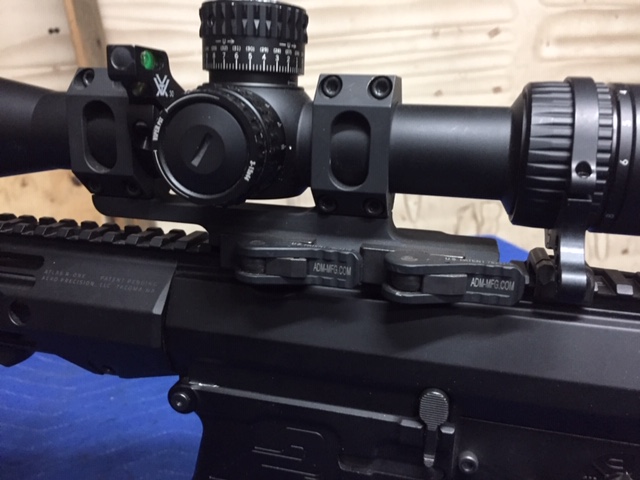
Once again, a bazillion options. And how you intend to use your scope will influence just what you need to use. Separate rings or one piece mounts, lots of good quality stuff out there.
If you want to go long like I do, you will need lots of elevation. A good reticle will have hash marks for using hold over for additional elevation and you can also add elevation with your mounting system.
I tend to go with one piece mounts that have added MOA, something that is generally not available with separate rings. On my bolt rifle I use a 20 MOA rail and the scope sits in a 20MOA mount, giving me an additional 40 MOA of up elevation adjustment. My scope for the AR will sit in a 30 MOA mount because the top rail has zero MOA built in.
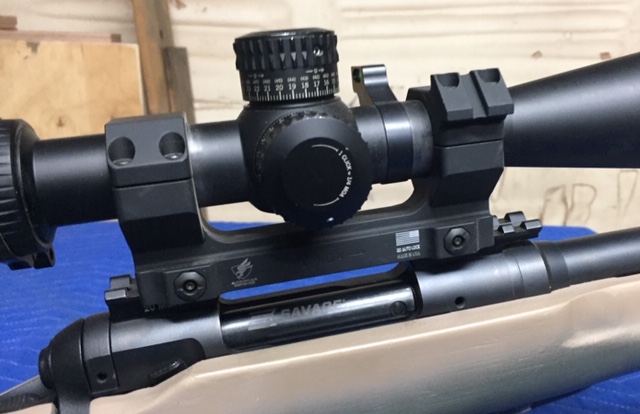
But realize that your scope has to have the adjustment range to utilize an increase in fixed MOA of a base to maintain your 100 yard zero. For reasons beyond my understanding scopes ship from the manufacturers with the mechanical zero in the middle of the elevation adjustment…. This means that you slap a scope on a gun and shoot for zero, and the scope won’t need the adjustment moved all that much. But it also means that you are leaving half of the adjustment range on the table.
A scope with 80 MOA of listed adjustment actually only gets around 40 MOA of up and 40 down as shipped. And that down is just wasted. Depending on the different bullets you use, you might need a couple of MOA’s of down but you are never going to go much beyond that. And this is where the fixed MOA’s of the mounting system take over. They give you back that lost amount of elevation.
So in order to use the added elevation of a mount, you need to know how much adjustment is available in your scope. And I am not talking the published numbers but the actual movement of the scope. Using the scope I do on my bolt rifle, I was able to add 40 MOA to rail and mount while not bottoming out the internal adjustments. The scope will dial up 89 MOA but still has about 6 MOA of down, which is more than the published range for the scope. There is very little adjustment left on the table.

Some people will argue that the scope is clearer with the zero in the optical center of the glass, I have not found a significant issue with having my scopes zeroed on the bottom side of the adjustment range.
How do you determine actual adjustment range? Shoot zero on your scope with no change to rail or mount, then dial downward until the scope bottoms out. This is the amount of down that will be changed to up adjustment when you add MOA to your mounting system. If you end up with 35 MOA of down adjustment, add 30 MOA of mount and rezero. Now you get all the elevation available but still have 5 MOA of down.
Movement after the shot….
Realize your gun is going to move somewhat after you pull the trigger, just physics. Yes you want that movement to be very little and in reality it is. What you may not realize is that the scope tends to magnify things and it appears far worse than it really is.
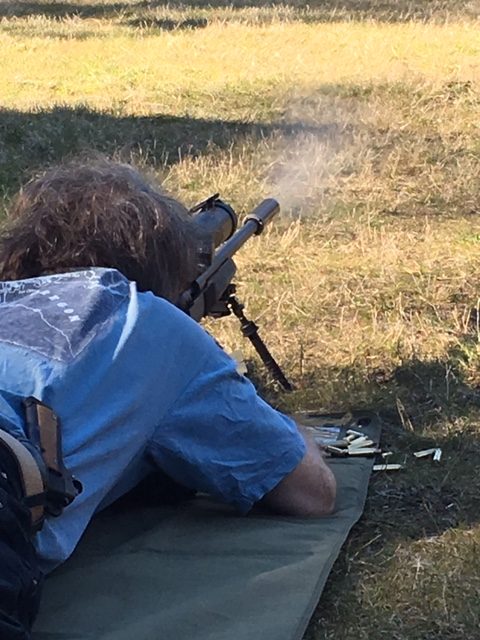
A great example of this is getting to see just what happens when you shoot in a video. The gun hardly moves yet you remember the scope jumping around at the end of the shot.
Best thing I can do is tell you the measurement for a difference in MOA at your rifle…. Essentially MOA built into a rail or scope mount is just a difference in height of one end versus the other. And I was shocked when I finally figured out how small this difference is… The difference between the front and rear scope ring of a one piece 20 MOA scope mount is approx. .0348 in. (based on a 6″ spread between the rings)
What this means is that for your sight picture to shift completely off target the gun is moving in thousandths of an inch…. yes you read that correctly.
To put this into perspective we can use a 24″ barrel as an example. To make a 1 MOA shift in the point of impact at 100 yards, the tip of the barrel only needs to move .0069 inches. To move as much as 20 MOA off target you only need to move the tip of the barrel .138 inches. This might give you a better idea of why you need to keep your rifle steady….
What you perceive as barrel hop is actually extremely minute amounts of movement magnified by the scope you are looking through. This visual mind bender is also why you appear so much more stable when you turn the zoom down on your rifle. Something to think about……
Suppliers
Vortex – Scopes, Rings and Accessories
American Defense Manufacturing – One piece scope mounts and other quick release mounts
EGW – Picatinny rails for scope mounts
New Products
F3R Machine – One piece scope mounts. Haven’t had my hands on one yet but I like what Cody Christian builds.
